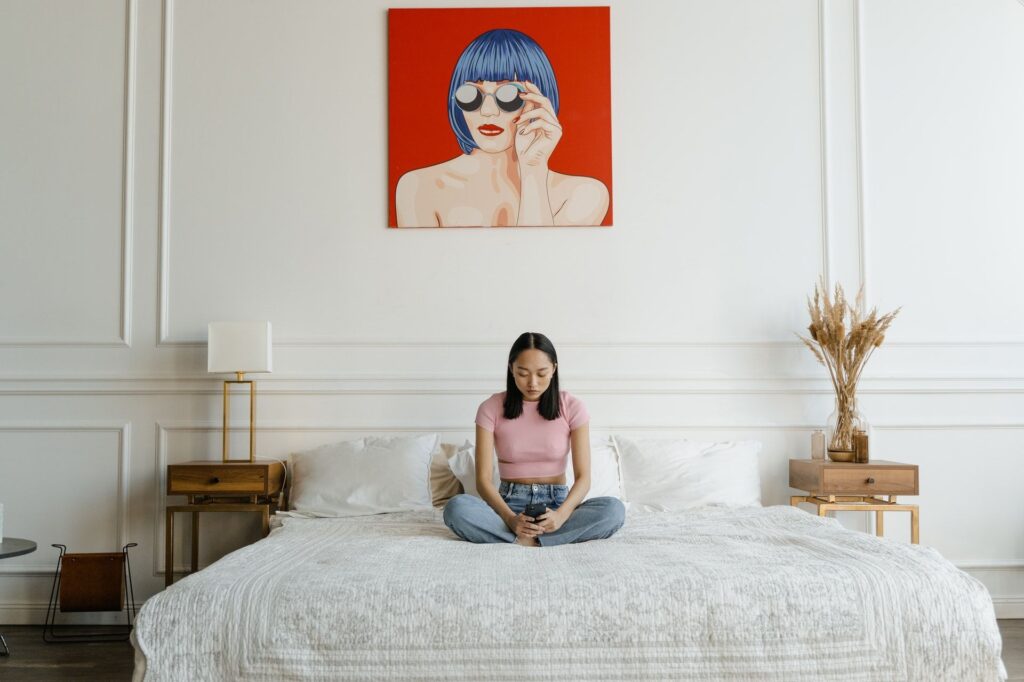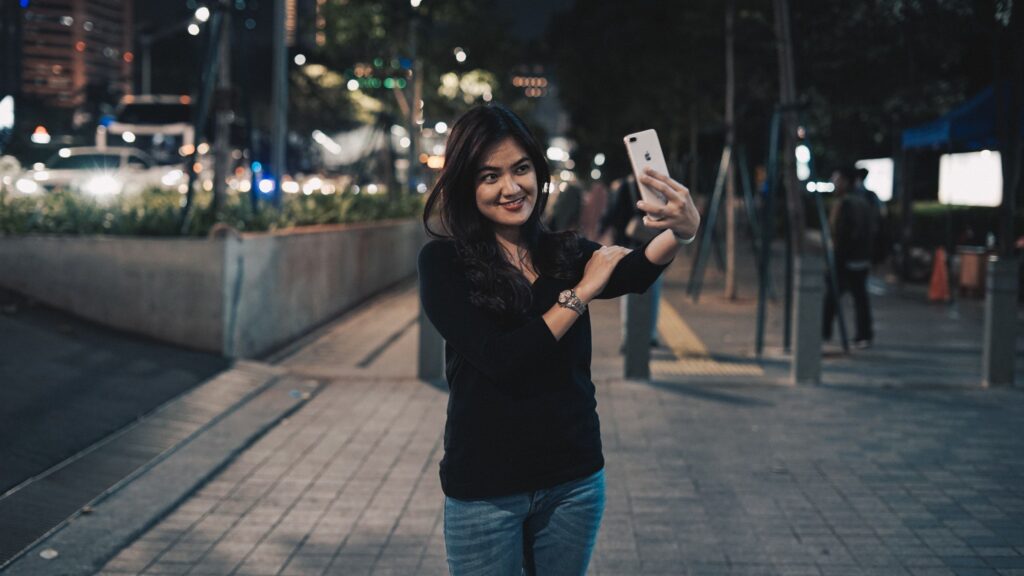Original Article: The Morning

The word “selfie” was called the 2013 Word of the Year by the Oxford Dictionary. Selfie can be mapped back to 2002 when it was utilised in an Australian online discussion forum, according to Oxford Dictionaries. A man posted an image of injuries to his face, suffered when he stumbled over some steps. He apologised for the fact that it was out of focus, saying that it was not because he was drunk but because it was a selfie. Perhaps “peak selfie” happened in 2015, when Kim Kardashian released her book “Selfish” – a glossy, 352-page coffee-table book of selfies that sold 125,000 copies.
Lightricks, which raised $ 205 million in venture funding from 2015 to 2019, makes Facetune, a photo editing and enhancing application. Facetune climbed alongside Instagram in the mid-2010s – an age of perfectly coiffed influencers posturing with vivid murals, lattes, and ice cream. Facetune made use of a freemium model, charging individuals $ 5.99/month to get access to all features. In 2017, Facetune was Apple’s most popular paid app; in 2018, it was downloaded and installed 20 million times and had 500,000 paying individuals. What Facetune did is enable anyone to harness the power of professional-grade photoshopping, a decades-old practice in advertising and publications. Facetune continued the trend of democratised software applications: Just as Shopify makes it easy to release an internet store, Airtable makes it very easy to develop a business app, as well as TikTok makes it easy to produce video content, Facetune makes it easy to retouch your pictures. Where Adobe was confusing, complicated, and also desktop-centric, Facetune was elegant, easy, and also mobile-first. The decline of Facetune over the past five years likewise speaks to a wider change in just how we present ourselves online. Facetune downloads are down ~ 75% from their peak.
As society has changed, Instagram’s growth has gone stale. Facebook reported Instagram’s regular monthly active users in June 2018, when Instagram hit one billion. Today, Instagram supposedly floats around 1.2 billion MAUs (monthly active users). In the nine months from September 2017 to June 2018, Instagram included 200 million users; it’s taken 32 months to include the next 200 million. As Instagram has grown to more than one billion monthly users, it has ushered in a very particular look: bright walls, artfully arranged lattes and avocado toast, and Millennial-pink everything, all with that carefully staged, colour-corrected, glossy-looking aesthetic. Photos that play into these trends perform so well on Instagram that the look became synonymous with the platform itself, then seeped into the broader world. Even if you don’t use the app, you’ve undoubtedly encountered an “Instagram wall”, a pop-up experience or a brightly patterned restaurant bathroom just made to be photographed. No one has capitalised on this look’s popularity more than influencers. Some have even started to make thousands of dollars on photo presets that warp anyone’s pictures to fit this mould. But every trend has a shelf life; the pendulum of society has been shifting for a long time. Almost two years earlier, Taylor Lorenz, an American culture and technology reporter for The New York Times Styles section, covering topics related to internet culture, proclaimed: “The Instagram aesthetic is over.”
While this pattern has been in motion for a long time, there are two recent catalysts:
- TikTok: The first indigenous Gen Z social system
- The backlash to video consumption.
Both are increasing our rejection of internet excellence.
- The TikTok generation
No one personifies Instagram’s mid-2010s height like Kylie Jenner. At one point, Kylie owned 11 of the 20 most-liked Instagram images. She made $ 1 million per sponsored post published on her platforms, and her Instagram-fuelled brand, Kylie Cosmetics, did reach $ 400 million of revenue in its first year.
Yet Kylie Cosmetics sales have dropped in recent times, and Kylie herself hasn’t adapted to the brand-new ethos of the net. While even more friendly, relatable makers like Charli D’Amelio prosper on TikTok (#1 most followed), Kylie has battled to regain the top spot.
TikTok has replaced Instagram as the epicentre of society and culture. Instagram user growth and time spent on the platform is stagnant or decreasing, while TikTok is surging on both metrics.
TikTok is the first Gen Z native social channel that symbolises Gen Z values. Inauthentic or performative material is ferreted out rapidly and also called out. In many ways, how Gen Zs utilise TikTok (as well as, to a lesser level, Snapchat) is a response to how Millennials consumed and interacted on Instagram.
This is clear in trending challenges and AI (artificial intelligence) visual effects; some examples:
- One of the most popular filters is 2078, which makes you look old and wrinkled.
- It’s also common to see videos with creators, usually a young woman, transform herself with make-up. These videos have a surprising vulnerability to them, as the creator is revealing the “before”, emphasising her blemishes and wrinkles.
These videos are a remarkable departure from the Facetuned influencers of five years ago. More youthful individuals are allergic to the contrived nature of Social Media 1.0 and 2.0, caring more about quality material than about looking good. Dispo, an app established by 24-year-old YouTuber as well as TikTok star David Dobrik, allows you to take photos that “develop” overnight like a disposable camera. You can’t view your photos until 9 a.m. the next morning, forcing you to “live in the moment” (the app’s tagline). We’re seeing a fascinating reversing of culture. Where Instagram filters in 2011 made everyone gorgeous, TikTok filters in 2021 make everyone not so. And where Instagram gave you filters to aid your bad pictures to look excellent, Dispo purposefully makes your great photos look even worse.
- The impending video backlash
The second essential shift in the last 12 months is the increase of Zoom and also Zoom fatigue. People are so exhausted that they’re taking their meetings as cats and moving into live gaming environments as I mentioned before. One early response to Zoom fatigue is the resurgence of audio. “Clubhouse” is a great example: Its rise has been nothing short of epic. Clubhouse is benefiting from the pandemic giving us more time at home. But it’s also benefiting from video’s pandemic-fuelled overexposure, as well as a years-long backlash to online perfection. Discord is another recipient of this trend, as the popularity of voice channels and audio-centric games like Among Us power it to new levels.
When people come to be too self-conscious to communicate without their digital masks, a brand-new innovation eliminates human faces from the equation. Beyond sound, brand-new ingenious products are making online interaction possible without the stress of looking picture-perfect. “Itsme” is an app that lets you interact with people through an avatar. The avatar tracks your face using your phone’s camera: When I smile, my avatar smiles; when I frown, my avatar frowns. You can also personalise your avatar to suit your heart’s desires. Itsme’s app store description includes the tagline, “Don’t get judged by your face”.
Over the following 12 months, the negative reaction to video content will certainly grow a lot more obvious. Audio-based items like Clubhouse and also avatar-based apps like Itsme will provide online interaction that’s free from the mental burdens of a previous generation of visual-based consumer technology companies.
Closing thoughts

I don’t think we’ll need our early morning masks or Zoom airbrushes a lot longer. Having your kids run with your Zoom meeting humanises you. The “above the neck” investment thesis no longer holds. It’s becoming more accepted – even celebrated – to be authentic and personal and vulnerable.
Last year, there was a boom in plastic surgical procedures after people spent months staring at themselves on Zoom, mirroring the demand increase in plastic surgery that accompanied social media’s rise. (In 2017, a survey of plastic surgeons found that 55% of patients requested surgery to improve their appearance in selfies.) People are human, after all.
I anticipate we’ll see a bad reaction to video and broadly, rejection towards online excellence. This pattern may spread among generational lines. Older generations that can’t shake their image-conscious relationship with the internet may turn to audio products like Clubhouse or the good old phone call.
Younger generations that never aspired to be internet perfect might lean right into rawer platforms such as TikTok and Dispo. The last 12 months and the coming of age of Gen Z and also the Covid-fuelled overexposure to video will shape the future generation of society. Technology will adapt to and eventually hasten these behaviour shifts, forging a more imperfect – and ultimately better – internet. As the perfect Instagram look changes, brands are, as ever before, trying to capture and take over the next wave. Brands cannot appear to be cutting-edge by painting walls to encourage engagement. That visual canvas is no longer on the cards.
All that perfection is a grind. Sarah Peretz, a Los Angeles-based influencer, once mentioned she spent months looking for the perfect wall that was a certain shade. And there came a time in her life where she would be looking for walls, walls, and more walls. Once she interrupted her vacation to take an image against a roadside casino’s orange wall, and at that point, she decided enough was enough.
- Written by: Mohenesh Chamith Buthgumwa
- Posted on: April 21, 2021
- Tags: Clubhouse, facebook, instagram, internet perfection, itsme, lonely, selfie, the morning, tiktok